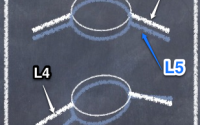Muscles – Working as Pumps or Springs?
Going back a couple of posts we talked about ‘How do we Run?‘ Super fun topic and one of the most popular posts we’ve had on the blog since I started writing again 🙂
So today I wanted to look at one of the key elements you need to know so you can begin to understand how we run. Our understanding of muscle function is far from complete, I hope in my lifetime research in this area of human function will throw up some great new insights. However, just because we don’t fully understand it yet, doesn’t mean we shouldn’t try. Also, I think it’s key to have a framework to work from, so that you can get consistent results and build your knowledge.
Pumps and Springs
So why pumps and springs? This is a basic way of thinking about muscle function and is brilliant in its simplicity. Though there is more complexity, you can get a long way thinking like this and have a lot of success in training and rehab. Simply asking does the function require the muscle to work as a pump or a spring can target your rehab and get your patient ready for the demands place on the tissues.
Pumps
This is how most exercises make the muscles work. Whenever I see a print out of a patients exercises from GP, physio, etc they are filled with exercises that make the muscles work as a pump. That’s not necessarily all bad, but is limited.
Working as a pump means that the muscle is producing force and creating a joint movement. Simple example would be a slowly lifting up a dumbbell for a bicep curl…producing force, making the elbow move.
Springs
This is where the real fun is…muscles working as springs! Actually, it would be more accurate to say the tendons are acting like springs, but for me the muscle tendon unit is in this together.
The function here is not a pumping action of the muscle to produce force. Here there is lots of force from the outside and the body/muscle is having to deal with it. Imagine doing 5 maximal jumps in a row as quick and as far as you can. In this case (after the initial take off) the tendons are forced to stretch and then they return as much of the energy they can for the next jump. The muscle in between the tendons is working super hard holding the tendon under tension to return the force as efficiently as possible.
This is a spring 🙂
Pumps and Springs in Running
Hopefully, this give you the idea of how the key muscles are working in running. There is no way you can use the key muscles as pumps and be efficient in running.
Once you have accelerated up to speed, where the pumping action will be key, you need to use them as springs. That is why running is so important. The better your running technique, the better you can utilise the ‘spring system’.
So, what I talked about in my previous post was how to avoid making mistakes. These mistakes that cause axial rotation as you run mean that the next step has to be delayed to correct the over rotation, toe off is delayed and the spring energy is diminished. This means you are forced to ‘pump’ more, which is very energy sapping and slow!!
Bad technique is also, a very compounding problem, as each step that causes technical error means that the next step has to compromise and so on and so on. If you need any visual proof, look at videos of top runners…though it looks like they are effortlessly gliding across the ground, they are actually super efficient at returning energy from one step to the next. They are ‘springing’ across the ground.
For the video below, go to 2 mins 30 and watch the race…400m is brutal!! Watch how the ones who pace it well are still springing along at the end, whereas, the guy in yellow who goes out too hard (spoiler alert!) and starts to ‘try’, loses technique and starts going backwards at quite a rate.
Before you think this is just for high speed 400m running, it’s not! Technique is key over any distance. The best marathon runners in the world are good runners at any distance…even if they are not world class specialists…they are amazingly fast…just look at Mo Farah on the last lap of a 10000 meters…FAST!!!
We’ll explore more of this soon 🙂
Physioblogger

